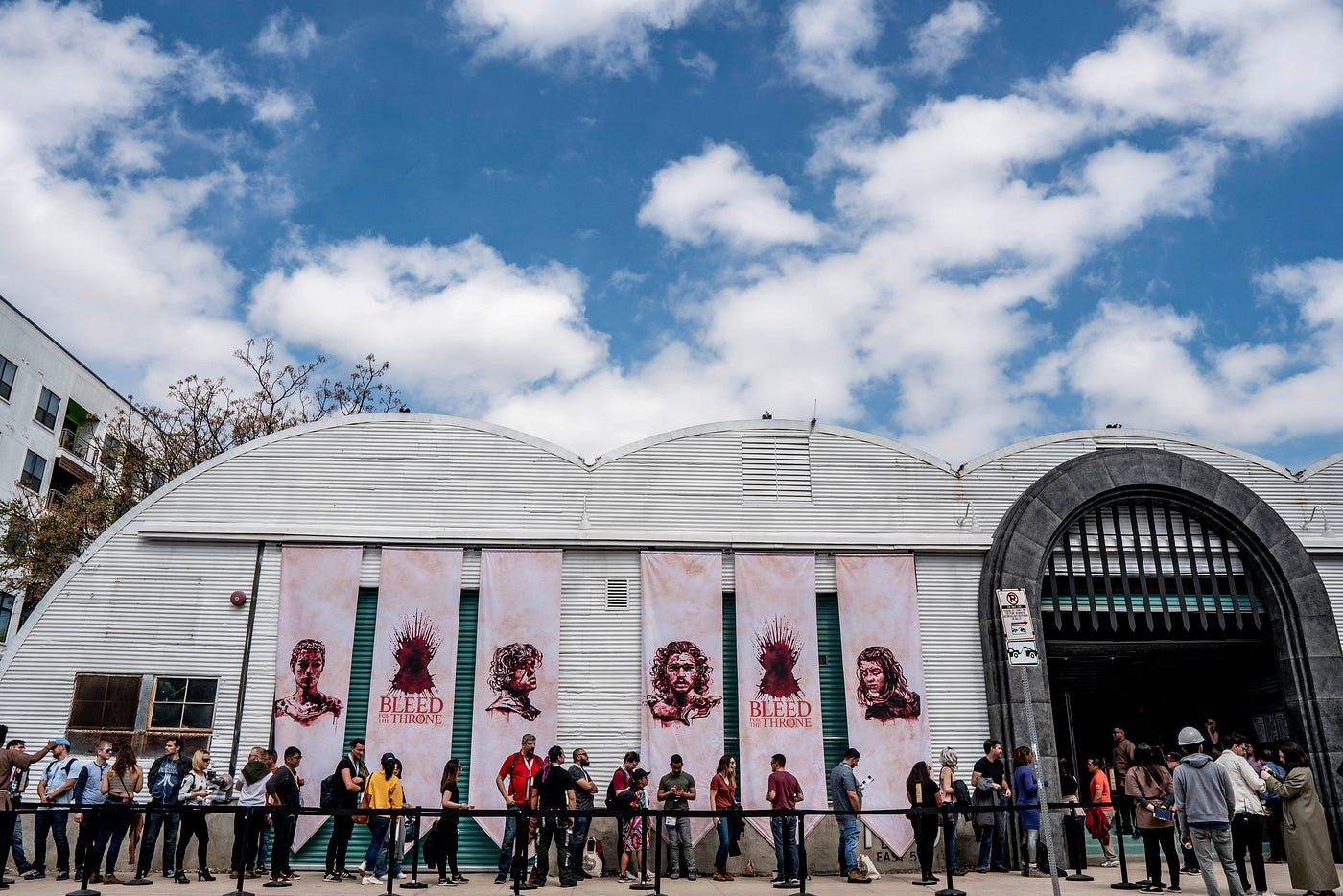
“Are you here for the festival?”
“Yeah, just for the first week!”
“For work or just to go?”
“Oh, work! I’m covering all of the immersive brand activations going on.”
“What’s an ‘immersive brand activation’?”
This was every Lyft conversation I had while I was at SXSW, and also the most interesting question I walked away from the festival with. Increasingly, every convention, festival, trade show, or premiere is home to or heralded by immersive brand activations. In theory, they are splashy, buzz-generating, elaborate PR stunts that raise the profile and social cachet of a property. In reality, they vary from Instagram palaces to clever transmedia microsites, from personalized gamified experiences to themed, interactive lounges. The full scope was on display at SXSW 2019, and each of the activations I sought out filled a different niche and promoted their brand in a different way, some more effectively than others. Each one had me wondering what its true value was, what the intent behind their design and implementation had been, and whether or not they had achieved what they set out to do.
Amazon Prime’s ‘Garden of Earthly Delights’

To promote Good Omens, the upcoming six-episode adaptation of Terry Pratchett and Neil Gaiman’s cult-classic novel, Amazon created a massive interactive space. One of the more beautifully designed activations in recent memory, the Garden was open both to badge holders and the general public. The space was so large that it never once, in the three days I visited it, felt crowded, and the traffic flow was such that no line ever felt frustrating to stand in.
In the center of the space stood a beautiful, massive apple tree, where you could get your own piece of forbidden fruit (a plastic apple) and open it to find a prophecy, just for you (taken directly from the text of the book). The sprawling green astroturf lawn was dotted with places to sit, and thematically relevant set dressing and photo ops. Some were elaborate animated GIF stations, decked out to replicate locations like Aziraphale’s bookstore, or otherwise swathed in green screen drapery. There were two food stands; a wine bar and a beer bar; a Hellhound playpen where one could cuddle adorable, adoptable puppies; a braiding/up-do station; a manicure station; and a main stage area where different acts performed throughout the week, like a Queen cover band, or from which Twitch streamers commanded a life-size game of chess.
The space was populated by characters from the series — angels, demons, Satanic nuns, witches and witchfinders. Their presence was not the focus of the space, but added, well, character, and created fun, small moments with guests as well as providing information about the show. These characters also roamed the streets, from Rainey to the convention center, handing out wonderfully clever, in-world newsletters, spreading the very peculiar gospel of the end of days, and drumming up attention for the show and the activation itself.

Even if its keyart hadn’t been wrapped around the complimentary shuttle buses, Good Omens would have been impossible to miss. Crowd management and the number of days it ran for made it one of the most accessible activations at the festival. Street teams of colorful characters drove traffic and spread the word. It’s likely that most of the attendees walked away without a much greater understanding of the show, or the book it’s based on — but certainly brand recognition was increased. The individual activations within the garden weren’t designed to hook you into the lore of the world or the conflict of the show, but they were designed to keep you there long enough to see the trailer a few times, and maybe have an interaction with one of the delightfully enthusiastic chattering, Satanic nuns.
High quality canvas tote bags and branded umbrellas were the swag everyone walked away with, and as a long-time fan of the property I carried mine away with glee, but for a show that Amazon seems to be making a big deal out of, adapted from somewhat obscure source material, SXSW feels like the perfect place to hand out something story related, that actively brings people into the material’s orbit: Audible download codes for the Good Omens audio book; free Kindle downloads; free paperback copies of the book. Friends who toured the experience with me were very interested in how the various details of the space tied (quite cleverly) into the book, but if they hadn’t been there with a fan, they wouldn’t have known, or even known to ask about some of it.

Still, overall, in terms of sheer visibility, I imagine Good Omens did better than any other entertainment property present.
FX’s Tiny Vampire Libraries
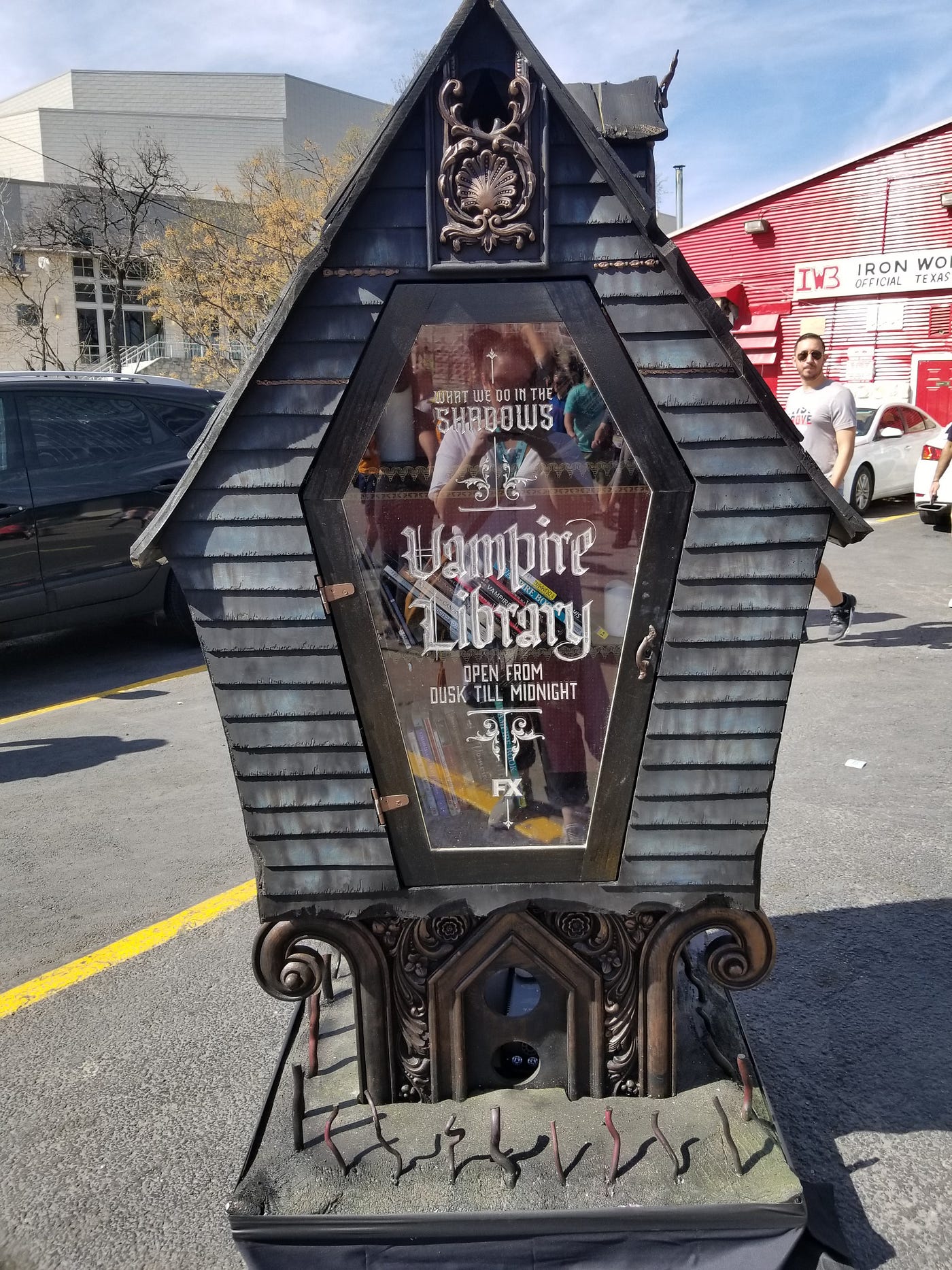
At the opposite end of the spectrum, the teensiest activation had to be FX’s tiny libraries for What We Do in the Shadows. Stylish, cleverly branded, and full of good ol’ fashioned books (about vampires), the tiny libraries were only unlocked at dusk for night owls to swing by and nab a book before bed. That’s it. That’s the activation. Fans of the original movie had to enjoy the ambiance, certainly, but with no levels of deeper interaction or additional space to experience footage in, for random passers-by not aware of the show, the libraries didn’t necessarily offer a way in.
In a sea of things to do and look at, the libraries weren’t exactly disruptive, but with a curious, active night-time crowd the size of SXSW’s, it was probably more than enough to intrigue and alert more people to the upcoming series than were aware of it before. How many more, I couldn’t guess at, and while visiting the little libraries was incentivized with a cash-prize sweepstakes component, the activation on the whole seemed relatively small-scale.
Netflix’s ‘The Highwaymen’
In a red building on Rainey street, a considerably deeper dive was happening. Agency COLLiDE and game designer Nick Lambrakis produced an elaborate immersive whodunnit set in a 1930s speakeasy, in which Bonnie and Clyde’s notorious Barrow gang seem to have their eye on knocking over the establishment. Participants outfitted with RFID wristbands descended to the bar to talk to a variety of engaging cast members — an intrepid reporter, a Hollywood producer, a reformed gunslinger, the proprietress and her son, and different members of law enforcement — to get to the truth. The game loop kicked off with a brief brawl and arrest, and then it was up to you to dig for clues and solve riddles and ransom notes. Particularly worthwhile interactions with key characters had them gifting you points, likewise if you brought them information or found clues they could use. Points could also be earned at the gambling tables in the back of the room, but where’s the fun in that? In the three hours I spent there, I earned extra points by pitching movies to the old timey producer (he absolutely loved my pitch for The Magnificent Seven), standing up for characters in fights, and ruthlessly throwing other players under the bus for failing to do the same.
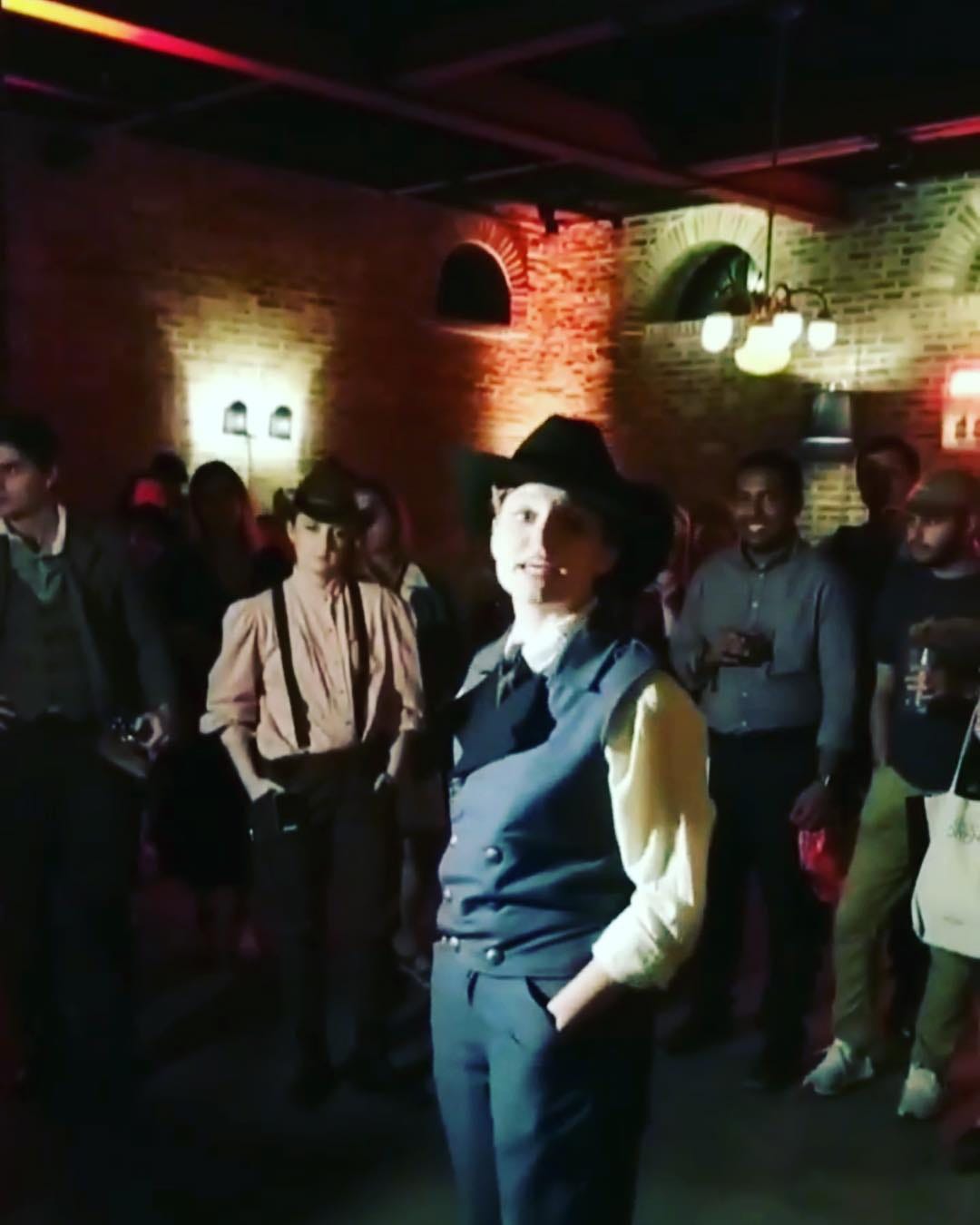
Do not come at me. I will bury you. Trust.
Get Amanda Schuckman’s stories in your inbox
Join Medium for free to get updates from this writer.
SubscribeSubscribe
The game’s plot was easy to follow, the characters fun to interact with, the journey a rewarding one, but a masterstroke was making the points worth something, and not just bragging rights. A general store in the back corner of the space was filled with merchandise, some branded, some merely thematically on point, which could be redeemed with the points you earned playing the game. SXSW exclusive buttons, leather stamped flasks, Wrangler denim, Stetson hats, even watches could be won with redeemed points. By the activation’s third night, The Highwaymen House was one I heard brought up constantly. People had heard it was a good game, had heard about the incredible swag, and wanted badly to get in. The activation was not only truly immersive, but garnered incredible word of mouth, very quickly. I think I told every single human I saw that the awesome denim jacket I was wearing had been won there. People were, generally, agog.
Given the constrictions of the space, the activation couldn’t garner the same degree of eyes-on brand recognition that, say, Good Omens did. But while I can’t say whether or not the Garden would truly motivate anyone to watch the show, everyone I spoke to who had experienced the Highwaymen House said they would see the film. Even though the story didn’t actually revolve around the film’s main characters, the fun of the world that had been built and the excitement of solving a crime were perfect hooks.
From the perspective of an immersive theatre goer, the only major failing of the activation was the competition between the live music and the live actors. The bar was noisy, and the actors had to fight for real estate to perform. As a gamer and escape room enthusiast, the only hiccup was a lack of clarity in instructions on gathering clues, torn pieces of a letter hidden around the space. Possibly a side effect of the noisiness. But as far as immersive brand activations go, this is exactly the kind of experience I always hope for. It must have been expensive, though, and with a limited audience, it’s understandable that not every entertainment company is going to craft something quite so deeply engaging.
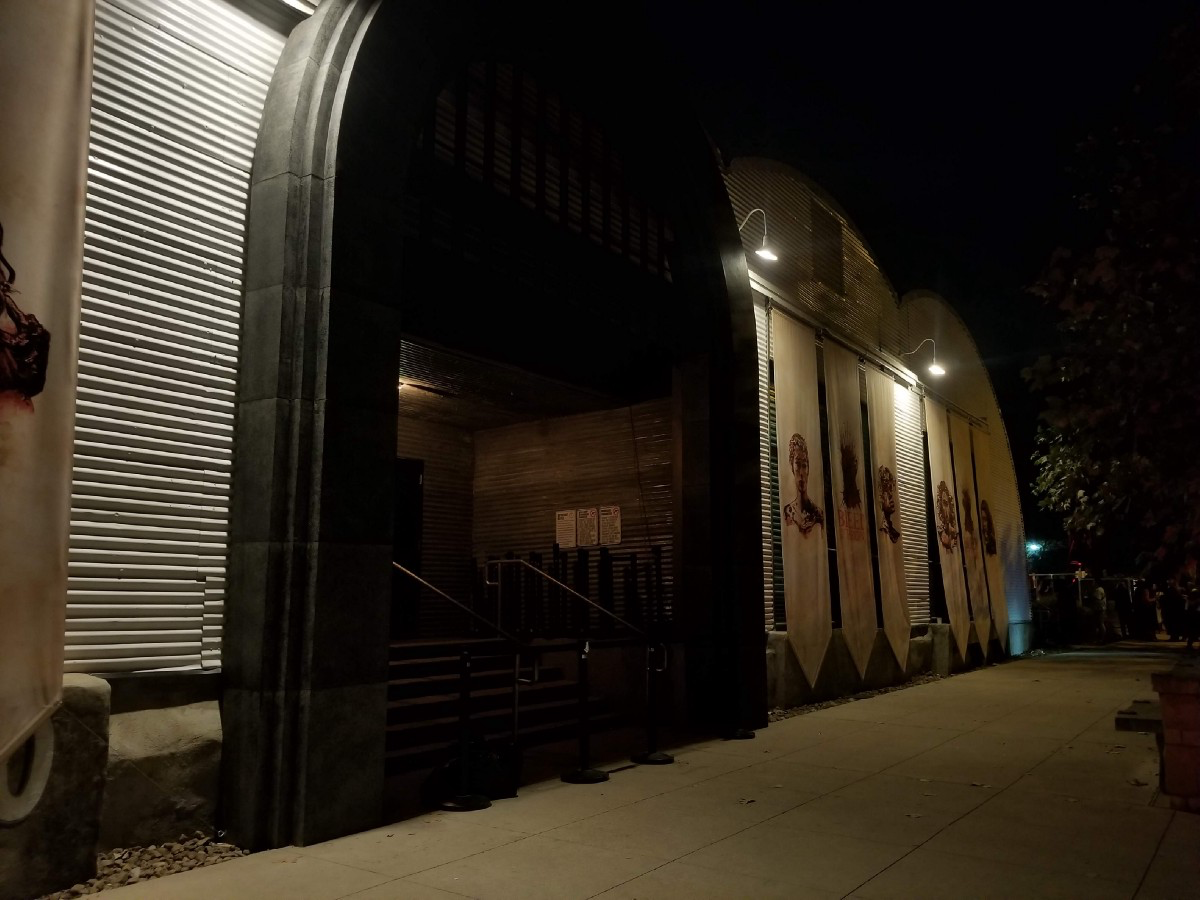
HBO’s ‘Bleed for the Throne’
…Unless that entertainment company is HBO. Last year’s SXSWestworld was, inarguably, the pinnacle of immersive brand activations, and frankly remains so. The sheer scope of it, not to mention the depth of the different storylines, the personalized experiences within the town of Sweetwater, and the insane production values make it a landmark moment in the branded immersive landscape. In the immersive landscape in general. And with that kind of accomplishment under your belt, it has to be hard to create a follow up, for a much more beloved, much more popular property.
SXSWesteros existed as two experiences, one for blood donors and one for everyone else. This was a great way to drive donor sign-ups, but a bummer for people who couldn’t donate due to medical reasons or because they hung out in Europe for too long during key parts of the 90s. The overall experience was similar: You entered a grand stone hall, at the end of which sat the Iron Throne on a dais, beneath a stained glass window bearing the Red Cross logo. A live choir with musical accompaniment flanked the throne on either side, and sang beautiful arrangements of themes and songs from the series. They did this all. Day. As a donor, you were taken to a red-draped waiting area with high backed wooden chairs, then processed for donation and taken to a back room for the actual donating. Afterward, you were escorted to a donor’s lounge where you drank juice and ate snacks, and were given a t-shirt exclusive to donors. Then, you were escorted to the activation portion.
Note: Spoilers for Game of Thrones in the next paragraph.

A curated trip down memory lane, the activation had attendees walk the path of four of GoT’s characters who bled for the throne, in one way or another, over the past 7 seasons while listening to an audio tour. Woodblock style portraits of the characters marked the moments you started each track, and became the soundtrack as you walked from room to room. As an experience, each room was cleverly staged and fun move through: for Arya, you relived her fight in the dark with that awful girl from the House of Black and White, with white streaks cutting across the black room, symbolizing the path of Arya’s sword. For Cersei, you experienced a version of her Walk of Atonement, journeying down a long dark hallway while the faces of hateful onlookers were projected on the walls, shouting condemnations at you, before finally passing through a beaded curtain with Septa Unella’s face projected on it while she intoned “Shame. Shame. Shame.” For Jon Snow, you stepped into a box of light projected on the floor amidst the recreation of a snowy battlement, the unnerving traitor sign planted nearby. As your silhouette formed on the screen in front of you, it morphed into Jon’s, and you relived the moment the Night’s Watch murdered him. Finally, for Tyrion, in a slightly disconnected moment, you heard his tremendous speech from the Battle of the Blackwater in a room filled with rubble, atop which stood the truly massive armour of Gregor Clegane. Like, yeah, they call him The Mountain, but holy crap. A person wears that. He wasn’t wearing it at the Battle of the Blackwater, though, because he wasn’t zombie hulk yet. Be that as it may.
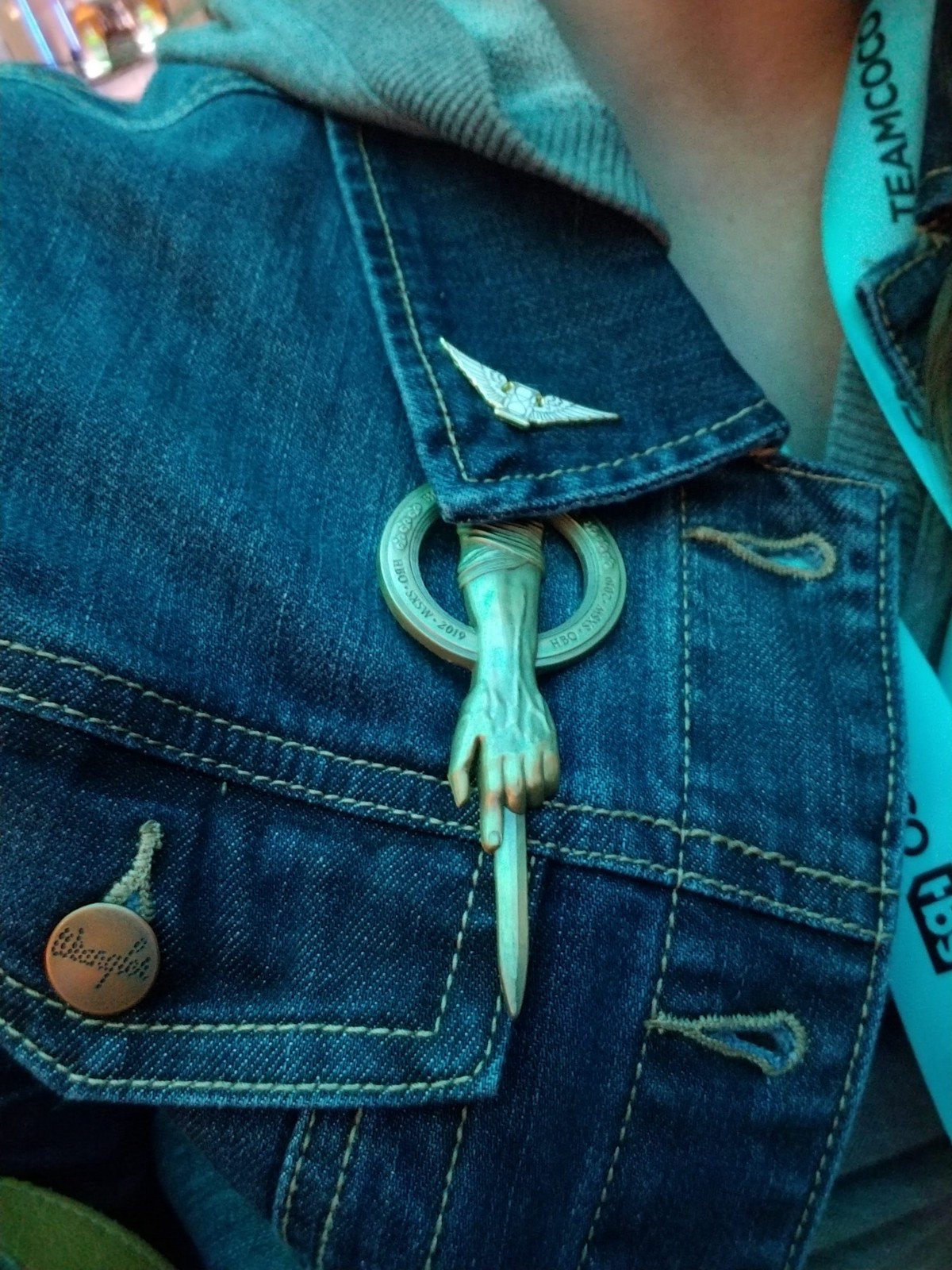
Once through the audio tour, donors went to sit in wooden pews in front of the Iron Throne, and non-donors stood behind them in the hall area. Donors were then called by name by red priestesses to line up, kneel before the Throne, and receive a Hand of the King pin unique to the activation. Baller.
I was fortunate to go to this experience twice: The first time as a donor and to go through the experience, the second time as press to spend more time with the outdoor activation. After going through the audio tour, attendees were guided outside to a fully realized war camp, completely with tents, horses (real horses that you could pet they let us pet the horses), Dothraki, Wildlings, Braavosi traders, Westerosi knights, food and beverages, swordplay lessons, and interactive Snapchat filter stations. My first time visiting the activation, I was impressed with the attention to detail and the sumptuousness of the throne area, but a little let down after the immersive splendor that had been SXSWestworld, which wasn’t fair, I realized, but. Still.
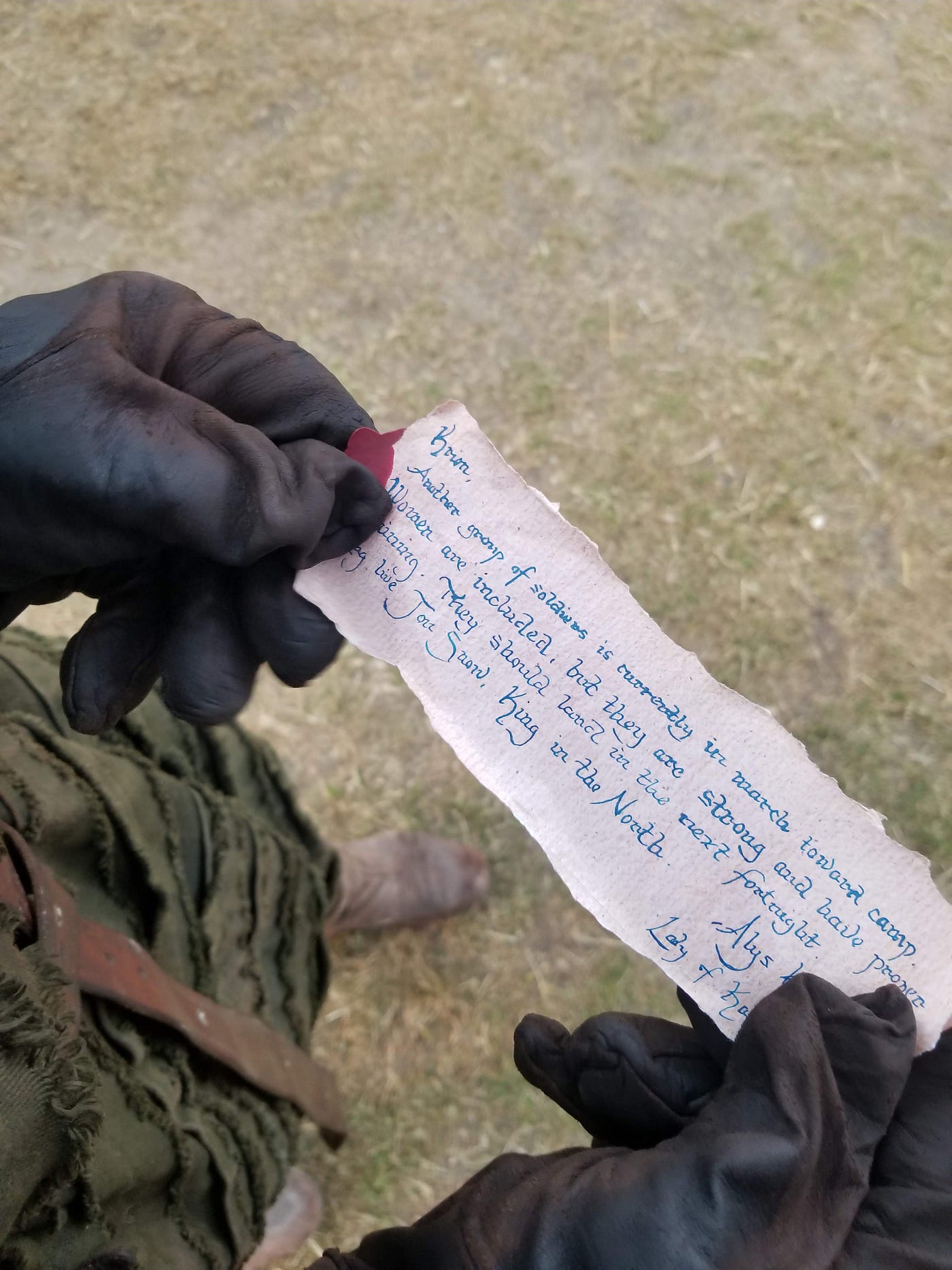
My second time, I spent two full hours engaging with the immersive activation outside. Did it hurt that for their final day, they had included a whiskey lounge? No, no it did not. With my little bit of liquid courage, I interceded in a number of fights between Northmen and Wildlings, commiserated with the blacksmiths about the state of the camp’s supplies, made plans for after the war with a Braavosi ship captain, and engaged in conversation about my people (Riverrun area, cousins to the Mormonts) and the toll the war had taken so far on the houses of Westeros. As a reward, I was given a secret mission, to deliver a scroll that had just been brought by a raven to a certain lord, and help him discern its contents if necessary. The scope of the immersive portion was not, of course, anywhere near that of Westworld’s, but its presence and quality, both in performance and as a dramatic experience, scratched the itch and made it one of the more memorable evenings of the festival.
I know there were some issues with the heat that affected donations, and for those not seeking a deeper immersive experience, I can’t say if the audio tour activation and Snapchat filters were exciting enough to make the time they spent in line worthwhile, but for those willing to press deeper or stay longer, the activation was an excellent one.
Starz’s ‘House of the Gods’
Starz’s American Gods activation was probably the most frustrating experience of the festival, coming in 3rd under “Austin weather, WTF is your damage” and Lyft drivers constantly disappearing into the void after you’d been waiting 8+ minutes for them to arrive, and the reason it was frustrating is because of how good the design of the space they created was, and how little it ultimately offered. The House of the Gods was a charmingly rustic stilted building on Rainey. The interior had been converted to Instagram palace worthy spaces evoking scenes from the show: Bilquis’s lush red boudoir, Technical Boy’s weird limo-throne. They turned one side of the bar into ‘Mad Sweeney’s’, complete with gold leprechaun coins scattered across the bar top, blending cool forest foliage with green neon.
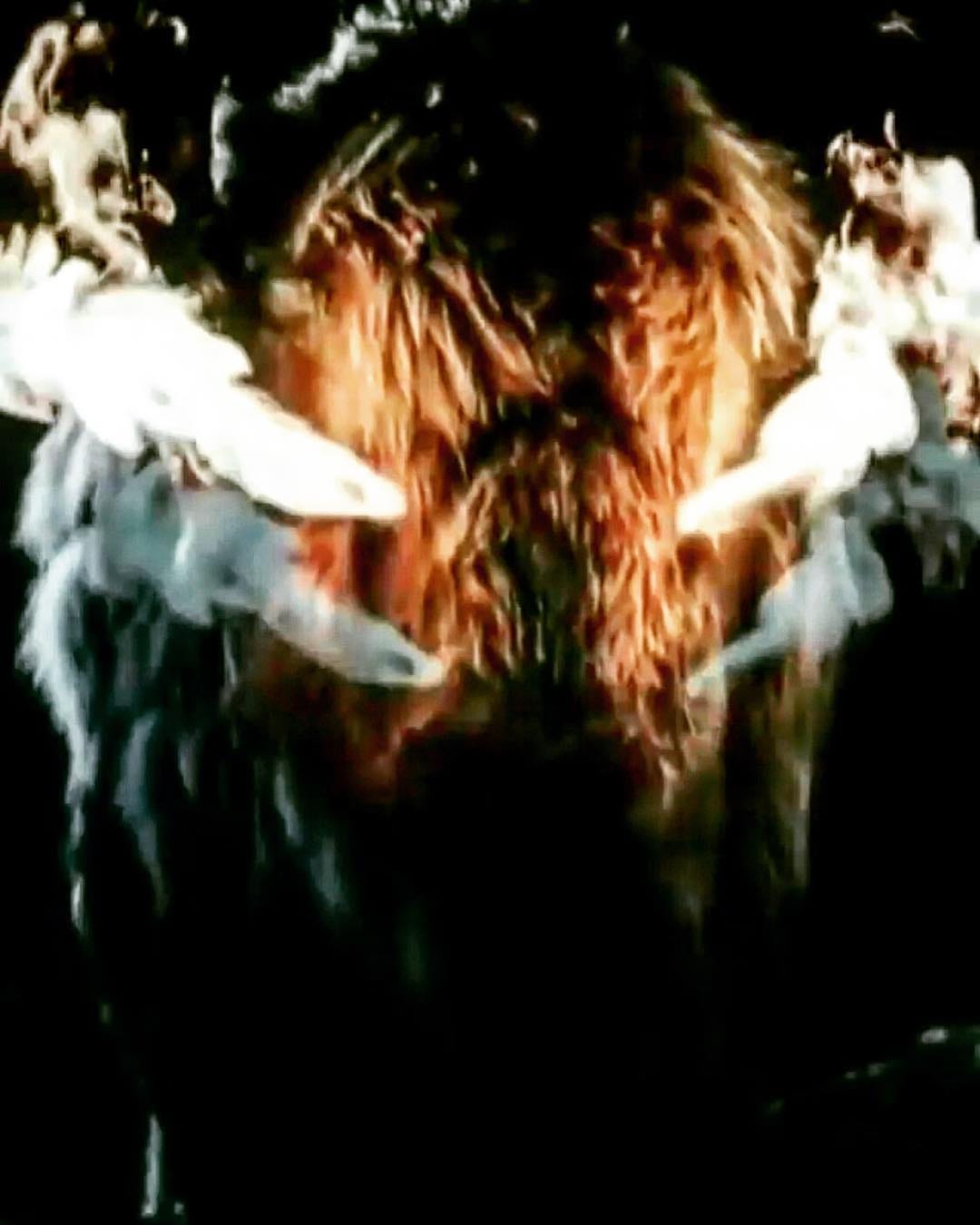
In the back patio area, two interactive experiences had been created, large standalone cubicles labeled ‘SHADOW MOON’ and ‘MR WEDNESDAY/MR WORLD.’ Both were video activations, where you stood immersed in a space, but to no real end. In the ‘WORLD/WEDNESDAY’ box, you could control the video feed that covered the walls around you with a single slider, to show you video edits that reflected Mr Wednesday and his old god realness, or Mr World and his technological splendor. According to the attendant, moving the slider would blend the footage, but it was difficult to tell how much it did so. In the ‘SHADOW MOON’ room, a very cool idea went under-realized. Stepping into the dark black room, you found yourself surrounded by mirrors, as in a funhouse. A small wrought iron grate, like the kind you’d find in front of a fireplace, stood in the middle of the space. Once the doors were closed, the White Buffalo with its flaming eyes appeared, and a voiceover track provided by Ricky Whittle advised the need to pick sides in the coming war between the old gods and the new. It was not a long message. The idea of the mirrors was cool, but the angles or the strength of the projection weren’t quite right to get the effect that I think was intended.
There was a fortune-telling machine with Anansi the spider inside of it, a reference to the at-the-time unaired episode where the characters finally journey to the House on the Rock and get their fortunes from a kitschy old fortune telling machine. Regrettably, the night I attended the activation, the machine wasn’t working.
The House of the Gods was a concept that could have been expanded into something truly spectacular. For a show with visuals as powerful and arresting as American Gods, with the concepts of idols, places of worship, shrines, and totems built into its narrative fabric, and an entire cast of fascinating, colorful gods to get to know, the House of the Gods didn’t offer avenues to explore that world or get to know it better. From a story perspective, if you didn’t know the show walking in, you wouldn’t have had a clearer idea of it walking out. What they made was beautiful, but didn’t transport you anywhere, and didn’t get you invested in the property.
Overall Thoughts
The design of the immersive, or at least interactive, spaces at SXSW this year were generally thoughtful; clever, detail oriented, inviting. The levels of engagement varied wildly, and the ultimate efficacy of each is potentially difficult to quantify. For the duration of the festival, maybe companies recorded a noticeable increase in their share of voice. Maybe activations got some hashtags trending, or attracted some new fans whose interest will translate directly into actual purchasing decisions and support. Hopefully companies are seeing enough net positive impact that they’ll continue to push boundaries and explore ways to engender deeper connections with their projects, giving creative power to increasingly immersive experiences that can build tangible bridges between an IP and its audience.
View all of No Proscenium’s SXSW 2019 coverage.
NoPro is a labor of love made possible by our generous Patreon backers. Join them today!
In addition to the No Proscenium web site, our podcast, and our newsletters, you can find NoPro on Twitter, Facebook, YouTube, Instagram, in the Facebook community Everything Immersive, and on our Slack forum.
Office facilities provided by Thymele Arts, in Los Angeles, CA.


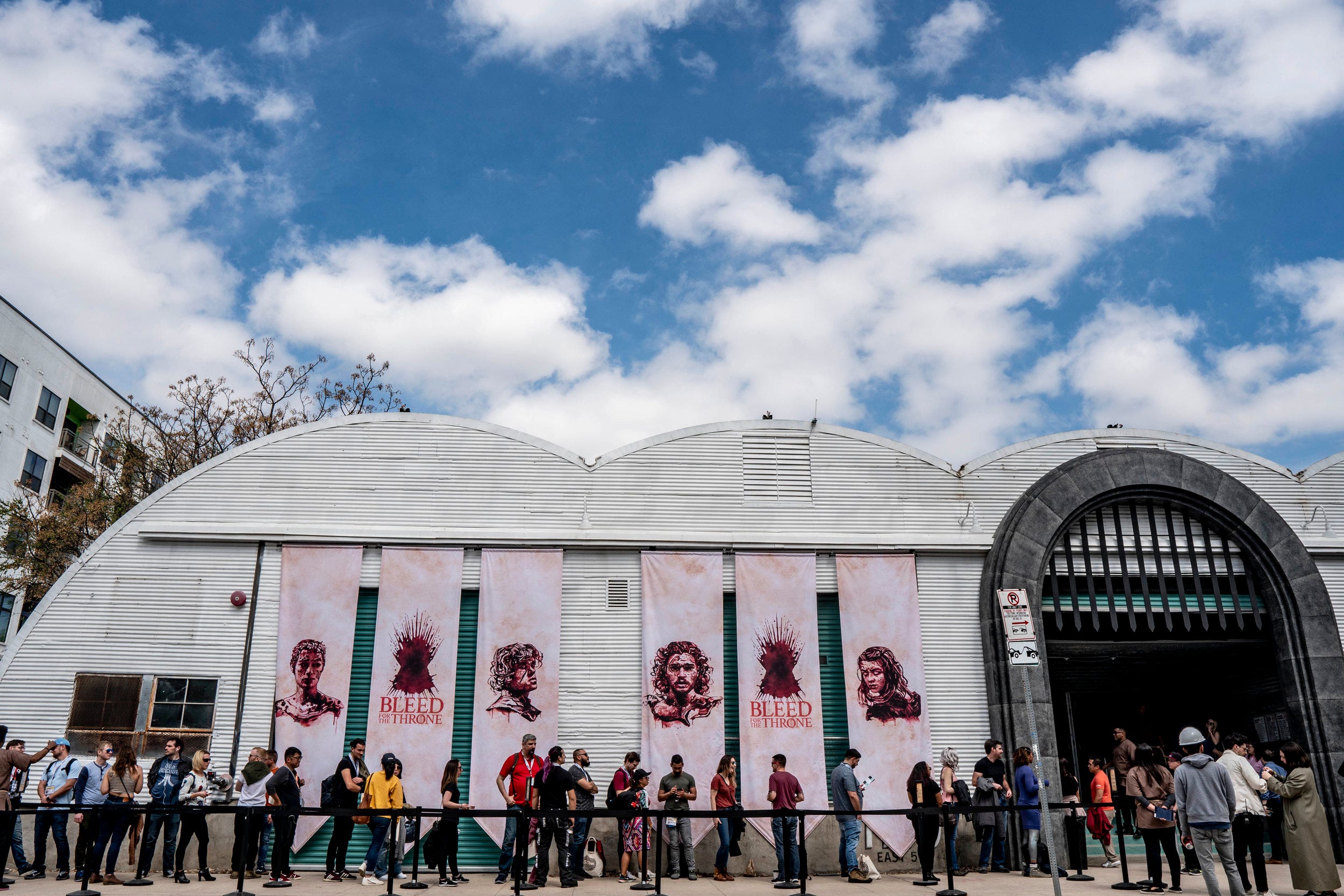

















Discussion